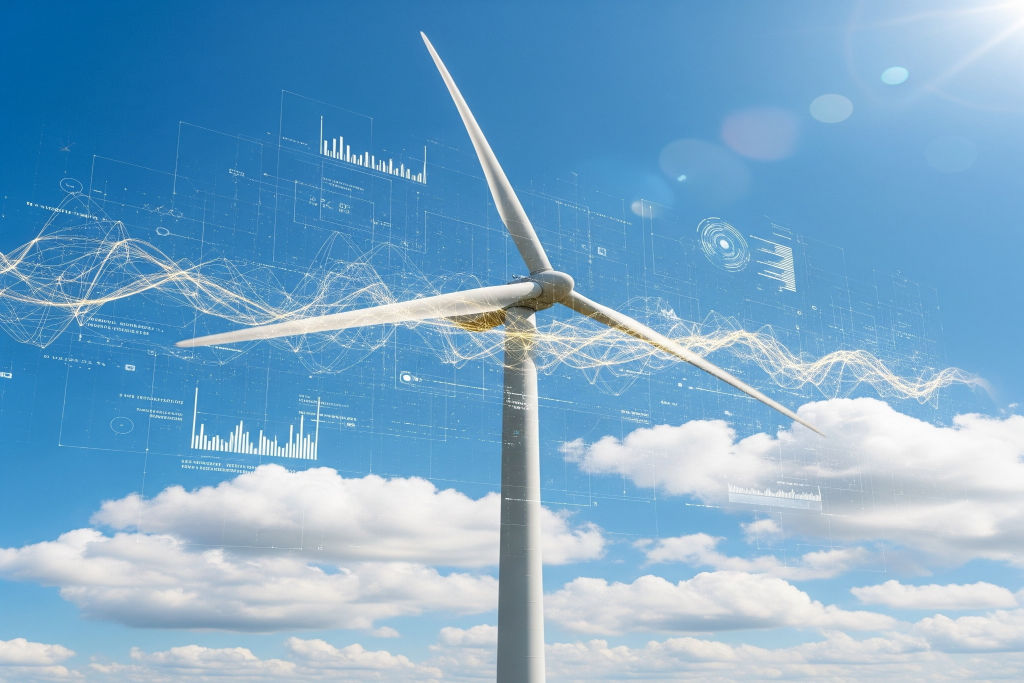Innovations in Wind Turbine Control Systems
Wind power has become one of the most promising and fast-growing renewable energy sources globally. The improvement in technology on a continuous basis has enhanced the efficiency and reliability of wind energy solutions in leaps and bounds. One of the major reasons for this advancement is innovation in wind turbine control systems, which are an integral part of optimizing wind turbine performance and maximizing the overall efficiency of wind farms.

Wind turbines are sophisticated devices that need advanced control systems to govern their smooth performance with different wind conditions. An effective wind turbine control system is critical for optimizing energy production, limiting mechanical stress, and prolonging the longevity of the turbines. With the industry moving towards intelligent and automated technologies, intelligent wind turbine technologies are transforming wind farm operations.
Importance of Wind Turbine Control Systems
The effectiveness of wind power solutions relies mainly on how well wind turbines respond to variations in wind speed, direction, and other weather factors. Without proper control, turbines stand vulnerable to inefficient performance, unwarranted wear and tear, and even disastrous failure. Contemporary wind turbine control systems use sophisticated algorithms, sensors, and automation methods to regulate the operational parameters of various turbines, such as:
- Blade Pitch Control: Rotating the blades at an angle in order to obtain maximum power and avoid damage at high wind speeds.
- Yaw Control: Turning the turbine to face directly across the wind for maximum efficiency.
- Generator Control: Power conversion control and grid connection control.
- Structural Health Monitoring: Predictive maintenance and fault detection to avoid downtime.
These systems all contribute to improving efficiency in wind turbines and encouraging reliability in the long term, thereby making wind energy a more feasible alternative to conventional sources of energy.
Types of Wind Energy Systems
Understanding the different types of wind energy systems is crucial for assessing how control innovations impact their efficiency. Broadly, wind energy solutions can be categorized into:
1. Onshore Wind Energy Systems
- Installed on land, these turbines benefit from lower installation costs and easier maintenance. However, they may face challenges such as fluctuating wind speeds and land use constraints.
2. Offshore Wind Energy Systems
- Situated in bodies of water, offshore wind farms harness stronger and more consistent wind speeds, leading to higher energy output. Innovations in wind turbine control system technologies are particularly crucial here due to the harsh marine environment.
3. Hybrid Wind Energy Systems
- Combining wind power with other renewable sources like solar energy to ensure consistent power generation and improved grid stability.
Each of these types benefits from continuous advancements in control technologies, which optimize energy capture and enhance durability.
Innovations in Wind Turbine Control System
Recent advances in smart wind turbine technology are revolutionizing the wind energy industry. Some of the most important innovations include:
Artificial Intelligence (AI) and Machine Learning
- Control systems equipped with AI and machine learning algorithms scrutinize wind patterns and turbine performance to adjust in real time, maximizing efficiency and minimizing downtime.
Advanced Sensing and IoT Integration
- Smart sensors gather enormous amounts of information about wind speed, temperature, and structural health to facilitate predictive maintenance and fault detection.
Digital Twin Technology
- Computer simulations of wind turbines assist engineers in modeling performance, evaluating new tactics, and making designs better before modifying them in real-world turbines.
Adaptive Control Algorithms
- Adaptive algorithms enable turbines to adjust autonomously depending on changes in the environment, thus ensuring maximum wind turbine performance in uncertain weather conditions.
Through the adoption of these innovations, the wind energy industry is shifting towards more self-driven, efficient, and reliable wind energy solutions.
Future Outlook
As the demand for clean energy grows, the role of wind turbine control system innovations will become even more critical. New advancements in the technology, including self-healing turbines, blockchain-based energy transactions, and other AI-related innovations, will further expand the wind energy solutions, pushing a new goal even further.
Wind turbine performance will reach new heights as smart wind turbine technology continues to evolve, making wind energy an even more compelling choice for global energy needs. Through the use of current innovations in control systems, the wind industry is set to provide more solid, less expensive and sustainable energy in the future.
Frequently Asked Questions (FAQs)
A wind turbine control system is a set of hardware and software mechanisms that regulate the operation of a wind turbine to maximize efficiency and ensure safe performance.
They optimize energy output, reduce mechanical wear, improve safety, and extend the lifespan of wind turbines.
The main types include onshore wind energy systems, offshore wind energy systems, and hybrid wind energy systems.
Smart wind turbines use AI, IoT, and advanced control algorithms to analyze wind conditions, predict maintenance needs, and adjust operations in real-time.
Key innovations include AI-driven control, advanced sensors, digital twin technology, and adaptive control algorithms.












